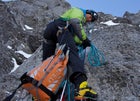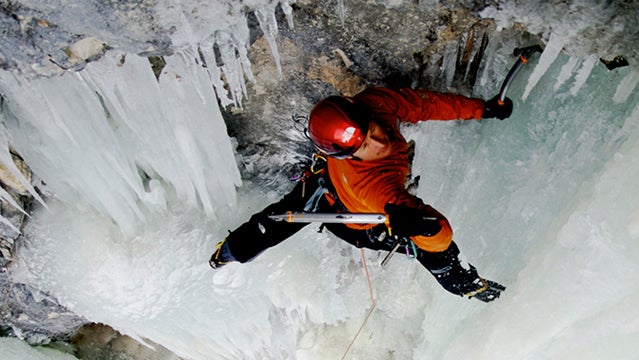Over the past 10 years, Austrian mountain guide Heli Putz has been involved in some of extreme sports’ most notable conquests. He helped BASE jumper-sky diver Felix Baumgartner train for his record-breaking 2012 jump from space. Together, they scouted—and Baumgartner executed—practice runs in Croatia, Oman, and Austria. In 2007, Putz worked with Axel Naglich to ski Alaska’s Mt. Saint Elias, the longest summit-to-sea descent in the world, a pioneering feat that was chronicled in the award-winning documentary Mount St. Elias. Putz was also at the center of the 2011 Cerro Torre controversy in Patagonia, in which David Lama became the first person to free climb the Compressor Route on the 4,000-vertical-foot wall, a feat that was staged and documented for a Red Bull film. Critics, including acclaimed alpinists Rolo Garibotti and Colin Haley, accused Putz, who was the project’s organizer, of drilling bolts up—and later leaving gear on—Cerro Torre.
The Snow Report
The latest snow, ski, and winter sports stories from ���ϳԹ���. Heli Putz.
Heli Putz. Heli Putz.
Heli Putz. Heli Putz.
Heli Putz.Regardless of the controversy, Putz has a knack for dreaming up and carrying out creative and daring undertakings in the mountains. A long-time friend of Red Bull founder Dietrich Mateschitz, Putz was one of the brand’s earliest sponsored athletes. Now he’s a freelance project manager, event organizer, and cameraman for the energy drink goliath. Early on, Putz realized the value of sponsoring events, feats, and athletes—and filming them—and how critical this was to building the Red Bull brand. In 1997, he launched the Snow Thrill in Chamonix; Shane McConkey participated. In 2001, he unveiled Red Bull White Rush with Chris Davenport as a competitor. More than 15 years later, Red Bull hosts hundreds of events a year, creates films like Art of Flight, and sponsors some of the best skiers on the planet: Simon Dumont, Sean Pettit, and Lindsey Vonn, to name a few.
Over the course of his career, Putz has worked with the best mountain athletes in the world: alpinists Steve House and Stefan Glowacz; skiers JP Auclair, Shane McConkey, and Daron Rahlves, among many others. He’s guided for TGR and Matchstick. Along with McConkey, he came up with the rules, regulations, and judging criteria that would later be adopted by the Freeride World Tour. He’s put up over 900 new sport-climbing routes around the world and claims first ascents of two 6,000-meter-plus peaks in Tibet. He’s skied first descents in the Alps, Himalayas, and South America.
At the moment, Putz is putting together a project to conquer one of the last unclimbed walls in Alaska, the Devil’s Paw, as well as a film with Gerald Salmina about a pioneering ski descent, also in Alaska. In April, the Atomic Waymaker, a new ski touring event that Putz schemed up with World-Cup winning ski- mountaineer Kilian Jornet, will debut on the Dachstein Plateau in Austria. Here, he talks about the debacle on Cerro Torre, working with Shane McConkey and Felix Baumgartner, and how the big-mountain comp scene is a bit like kindergarten.
Which skiers impress you?
I think Shane McConkey was the creative mastermind for skiing, showing what you can do with two sticks on your legs. But everything ends up in a big black hole. For Shane, he died. You cannot do endless dangerous things and survive. It’s like what Felix told me, “It’s good to do the next thing, but you have to know what that means.”
Talk about working with Felix Baumgartner.
I’ve worked on almost everything with him. We’ve been friends for a long time. He always focused on being better and stronger. His philosophy was, he never did a jump a second time. He always said, “It’s done. Let’s look for something better, the next, and the more creative thing.”
He was always looking for a better jump, like McConkey, but also thinking on a more professional level, like: How we can market this? What market needs good footage and film? Which obstacle brings enough power into the project to do it?
He always wanted to do something that no one could ever copy. So did I. In 2007, we found a cave in Croatia, 200 meters deep to help Felix prepare for Stratos. We had no idea how the eye works when you go down so fast into something so dark, like space. We involved doctors and specialists. He did it and then was ready for the next, better thing.
What inspires you?
I’ve always been focused on making the sport better and have wanted to do things that brought athletes to the next level.
How did the project to ski Mount St. Elias come about?
In 2003, I was working on a speed skiing project and was looking for a 5,000- to 6,000-foot-high face that would be the speed track for Harry Egger, the world-record holder in speed skiing at the time. I had looked all over the Himalayas and was scouting in Alaska, which didn’t have the attitude, just in case. I had booked the fantastic bush pilot Paul Claus and was by myself, so I called Axel Naglich. When we flew over St. Elias, we realized that it must be skiable all the way to the sea. That’s how the idea was born.
You’ve been involved in a lot of projects where the goal—skiing Mount St. Elias, climbing all of the north faces of the Alps—is intrinsically linked to making a film. Some people criticize this. What do you see as the purpose of events and films?
The reason I like filming in extreme conditions, extreme mountain faces, extreme skiing is to show how great it is, show the unique location, great athletes, new lines—especially the new lines—projects on hidden spots, first ascents. I like the voltage in my brain and the sweat in my fingers, before as an athlete, and now as a production leader and cameraman.
How did you learn to be a cameraman?
Because I was always in positions where other cameramen couldn’t be.
What do you see going on in ski films these days?
They are not focused on the sport. The cameramen, they are not from the sports side. They are just looking for action, crazy things. They push the athletes to do big jumps, crazy lines. They just film lines. There’s no story, no history. We need to make ski films with stories behind them. Athletes risk their lives for big lines for movies made on DVDs that are manufactured in China.
We need to bring the athletes into cinema. Athletes now pay to be in a movie. This situation makes me angry and it’s not fair to the athletes. In the end, the traditional ski production companies aren’t in it to make good films; they’re in it to make money.
But is there a conflict here with Red Bull in that people might say Red Bull does what you’ve described above?
Red Bull is more interested in storytelling these days, in documentaries like The North Face series, the story on David Lama. They offer information, history, and then they show you the people who do it. Art of Flight was a lot of fancy cameras, but there are many other Red Bull films.
How did you first get involved with Red Bull?
I was involved from the beginning. At first, I was an athlete. When Mateschitz started the company, he sponsored me as a skier and climber at this time. I told him we needed money to do events, then I started organizing events. I never went to Red Bull because I needed work; I went because I had an idea and I was going to do it whether they were on board or not. I like exploring. I’m so stoked from all the projects I’ve worked on. It’s a kind of fire in me.
It seems that you got all the blame for the incident on Cerro Torre. Was it your fault or are there others who should be held responsible as well?
I don’t talk like talking about Cerro Torre. I will say this: I was the production leader and organizer. I never climbed one pitch on the route. Rolando Garibotti has written that I drilled the bolts, but it was David Lama’s partner, Peter. I didn’t care about everything that was written on the Internet, but it showed me how cowardly these guys must be because they never contacted me to ask about the truth; they just wrote whatever they pleased. It was a new experience for me: People writing without asking for the truth and “friends” put their heads in the sand.
What’s the difference between Austrian and American skiers?
I realized that American skiers are different than Austrians when I was guiding my first season at Mike Wiegle’s heliskiing in the ’90s. In Austria, we worked very hard to ski “right” and “perfect.” If you fall, an Austrian starts cussing and grumbling, but an American will fall in the powder, and then just say, “Wow! What great snow.”
Why do you believe the freeskiers in the ’90s skied better than the athletes now?
Skiers now do some tricks. They ski slowly and if they find a good spot, they do some spins and backflips or whatever. In the ’90s, there were way stronger skiers and they were more creative. It’s like a kindergarten now. All the strong skiers want to film now with Matchstick or TGR, so they’re not competing, and the competitor scene is not as strong as it once was.


